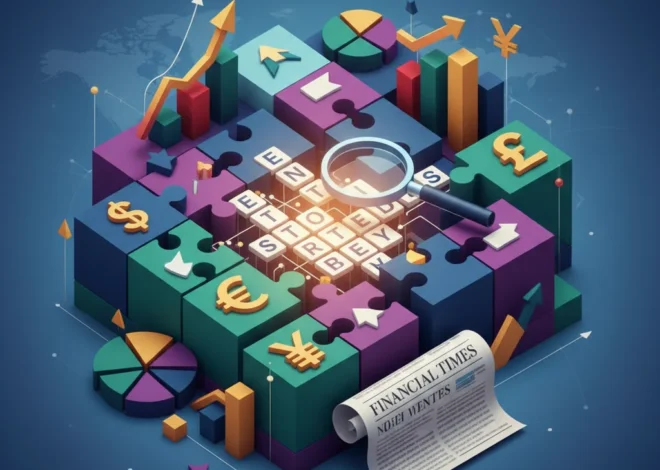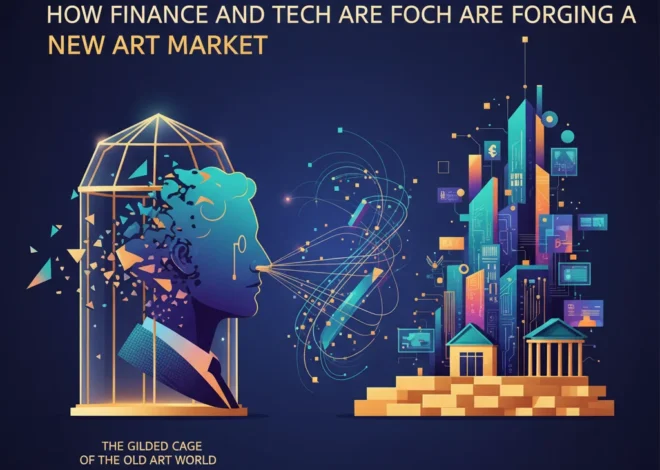
The Ultimate Investment: Why Financial Literacy is the Bedrock of a Thriving Global Economy
In a world of complex financial instruments, volatile markets, and disruptive technologies, the most powerful asset you can possess isn’t a stock, a bond, or a cryptocurrency. It’s knowledge. Financial literacy—the ability to understand and effectively use various financial skills, including personal financial management, budgeting, and investing—is no longer a niche skill for professionals. It has become a fundamental pillar of individual well-being and, by extension, global economic stability. Recognizing this urgent need, initiatives like the Financial Times’ Financial Literacy and Inclusion Campaign are sounding the alarm, calling for a collective effort to bridge a dangerously wide knowledge gap.
But why does this matter so much, not just to individuals, but to business leaders, seasoned investors, and the architects of our financial systems? The answer lies in the profound and often underestimated connection between the financial decisions made at kitchen tables and the seismic shifts that occur in the global economy. A lack of financial understanding isn’t just a personal problem; it’s a systemic risk that affects everything from the resilience of our banking systems to the efficiency of the stock market.
The Silent Crisis: Quantifying the Global Financial Literacy Deficit
Before we can tackle a problem, we must understand its scale. The state of global financial literacy is, to put it mildly, concerning. It’s a silent crisis that quietly erodes wealth, stifles opportunity, and leaves millions vulnerable. According to a landmark S&P Global FinLit Survey, only about one-third of adults worldwide are considered financially literate. This means a staggering two-thirds of the global population operates without a fundamental understanding of concepts like interest, inflation, and risk diversification.
The disparity is not uniform. Developed economies often fare better, yet even in these nations, the numbers are far from reassuring. The gap widens significantly when we examine it through the lens of gender, age, and income level, creating pockets of extreme financial vulnerability within otherwise prosperous societies.
To put this in perspective, here is a snapshot of financial literacy rates across different economic landscapes. The data highlights a clear correlation between economic development and financial knowledge, but also reveals significant room for improvement everywhere.
| Region / Economic Group | Average Financial Literacy Rate | Key Challenges |
|---|---|---|
| Major Advanced Economies (G7) | ~55% | Complexity of financial products; Overconfidence; Gaps in retirement planning. |
| BRICS Nations | ~28% | Rapid economic change; Unequal access to education and banking services. |
| Developing Economies | <25% | Low access to formal banking; Lack of basic educational resources; High unbanked population. |
| Global Average | ~33% | Systemic exclusion; Lack of standardized financial education in schools. |
The consequences of this deficit are severe. On an individual level, it leads to crippling debt, susceptibility to predatory lending and financial scams, and an inability to build long-term wealth through prudent investing. On a macro level, it destabilizes the entire economy. A population that cannot distinguish between sound investment and speculative gambling can create asset bubbles. A society that doesn’t understand debt can fuel a credit crisis. The 2008 financial meltdown, for instance, was exacerbated by millions of homeowners taking on complex subprime mortgages they simply did not understand (source).
Beyond the Eye of the Storm: Analyzing the Economic Aftermath of Hurricane Melissa
The Technological Frontier: Can FinTech Solve the Problem It Helped Create?
While the explosion of financial technology (fintech) has introduced new risks, it also holds the most promising solutions to the literacy crisis. Innovation in banking, investing, and personal finance management is making it easier than ever to learn by doing, often in a controlled and guided environment. The very tools that can be used for speculation can also be powerful educational platforms.
The impact of fintech on financial education can be broken down into several key areas:
- Accessibility and Inclusion: Digital banking and mobile payments have brought millions of unbanked individuals into the formal economy, providing a crucial first step towards financial management.
- Robo-Advisors: Platforms like Betterment and Wealthfront automate proven investing strategies like diversification and long-term indexing, teaching users sound principles through their very design. They take the emotional guesswork out of trading, a key hurdle for novice investors.
- Micro-Investing Apps: Services like Acorns and Stash lower the barrier to entry for the stock market, allowing users to invest small amounts. This “learning by doing” approach can demystify the world of investing.
- Budgeting and Analytics Tools: Modern apps provide real-time feedback on spending habits, categorizing expenses and helping users visualize where their money is going—a cornerstone of personal finance.
Even emerging technologies like blockchain, while often associated with high-risk speculation, have a potential role to play. The transparency and immutability of blockchain technology could one day underpin more transparent financial products and systems, reducing the information asymmetry that often disadvantages less-savvy consumers. However, this potential is currently overshadowed by the extreme volatility and complexity of the crypto space, reinforcing the need for education before participation.
Here’s how different fintech tools are actively contributing to the educational ecosystem:
| Fintech Category | Primary Function | Educational Benefit |
|---|---|---|
| Robo-Advisors | Automated, algorithm-driven portfolio management. | Teaches risk tolerance, asset allocation, and the power of compound interest. |
| Micro-Investing Apps | Investing small, regular sums of money (e.g., “round-ups”). | Demystifies the stock market and encourages the habit of consistent investing. |
| P2P Lending Platforms | Connects individual lenders with borrowers. | Provides real-world lessons in credit risk, interest rates, and loan diversification. |
| Digital Banks / Neobanks | Mobile-first banking with analytics and budgeting tools. | Offers immediate feedback on spending habits and promotes saving goals. |
The New Weapon in Wall Street's Debt Wars: Hedge Funds Unleash Antitrust Law
A Call to Action: Forging a Financially Literate Future
Closing the financial literacy gap is not the sole responsibility of any single entity. It requires a concerted effort from policymakers, educational institutions, corporations, and individuals. Initiatives like the FT’s campaign are crucial for raising awareness, but they must be followed by tangible action.
A multi-pronged approach is essential:
- Integrate Financial Education into School Curricula: The most effective long-term solution is to teach the fundamentals of economics and personal finance from an early age. A recent report highlighted that students who receive high-quality financial education in high school make significantly better financial decisions as adults (source).
- Corporate Responsibility and Employee Wellness: Businesses have a direct interest in the financial health of their employees. Financial stress is a leading cause of lost productivity. Implementing robust financial wellness programs, which offer everything from budgeting workshops to retirement planning advice, is a win-win investment.
- Ethical Financial Technology Design: Fintech companies have a responsibility to design platforms that not only provide access but also educate. This means prioritizing clear communication, transparent fee structures, and tools that encourage responsible financial behavior over high-frequency trading.
- A Commitment to Lifelong Learning: For individuals, the journey doesn’t end with a high school class. The world of finance is constantly evolving. Taking personal responsibility to stay informed about the economy, understand investment products before using them, and seek out credible resources is paramount to navigating the complexities of modern finance.
The Gig is Up: How the UK's New Labour Crackdown Will Reshape Finance, Tech, and the Economy
Ultimately, investing in financial literacy is the most powerful form of ESG (Environmental, Social, and Governance) investing we can undertake. It is a social good that strengthens communities. It is a governance imperative that creates more stable and transparent markets. And it is an investment in our collective economic environment, creating a more resilient and prosperous world for generations to come. The question is no longer whether we can afford to do it, but whether we can afford not to.


